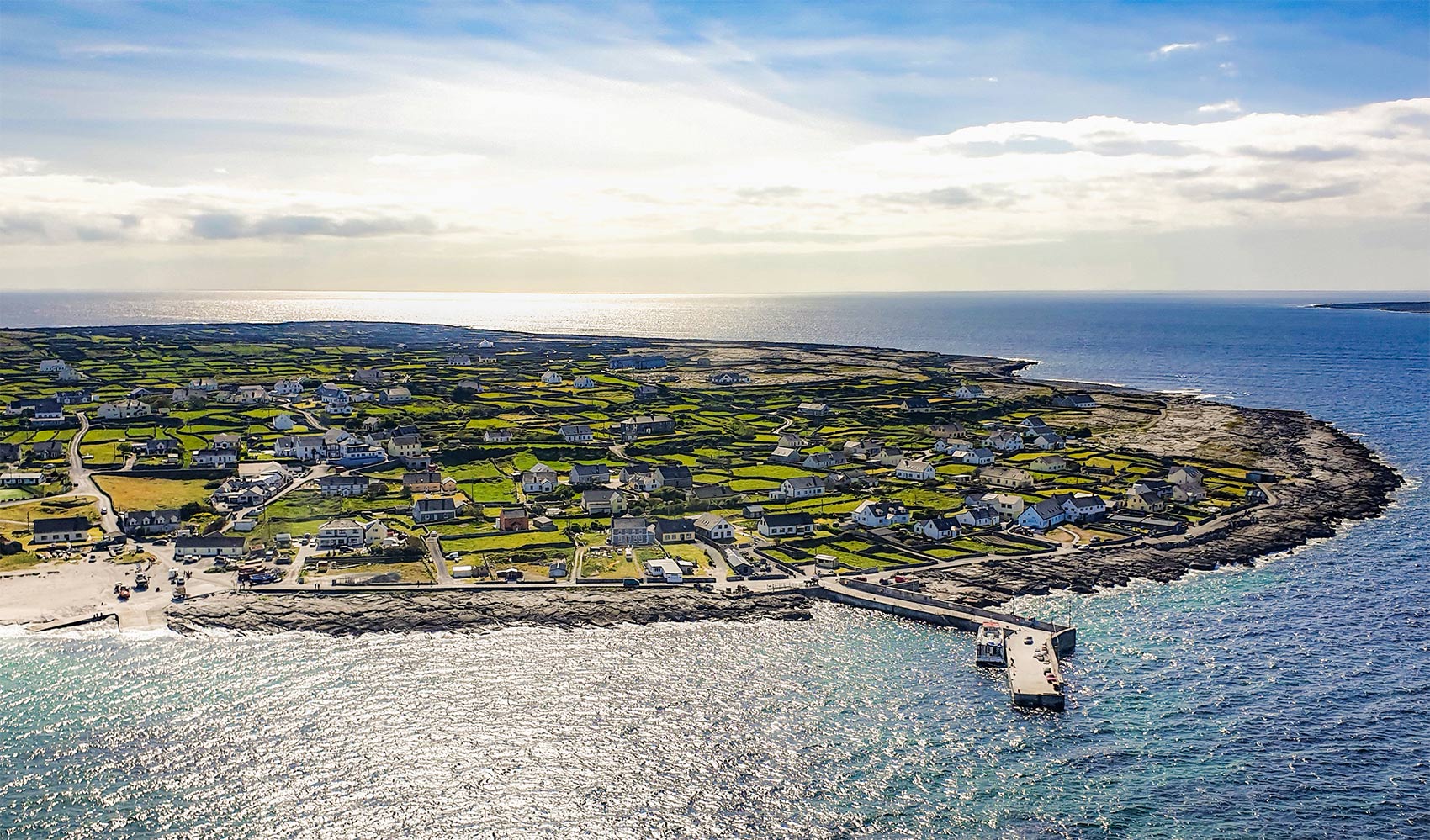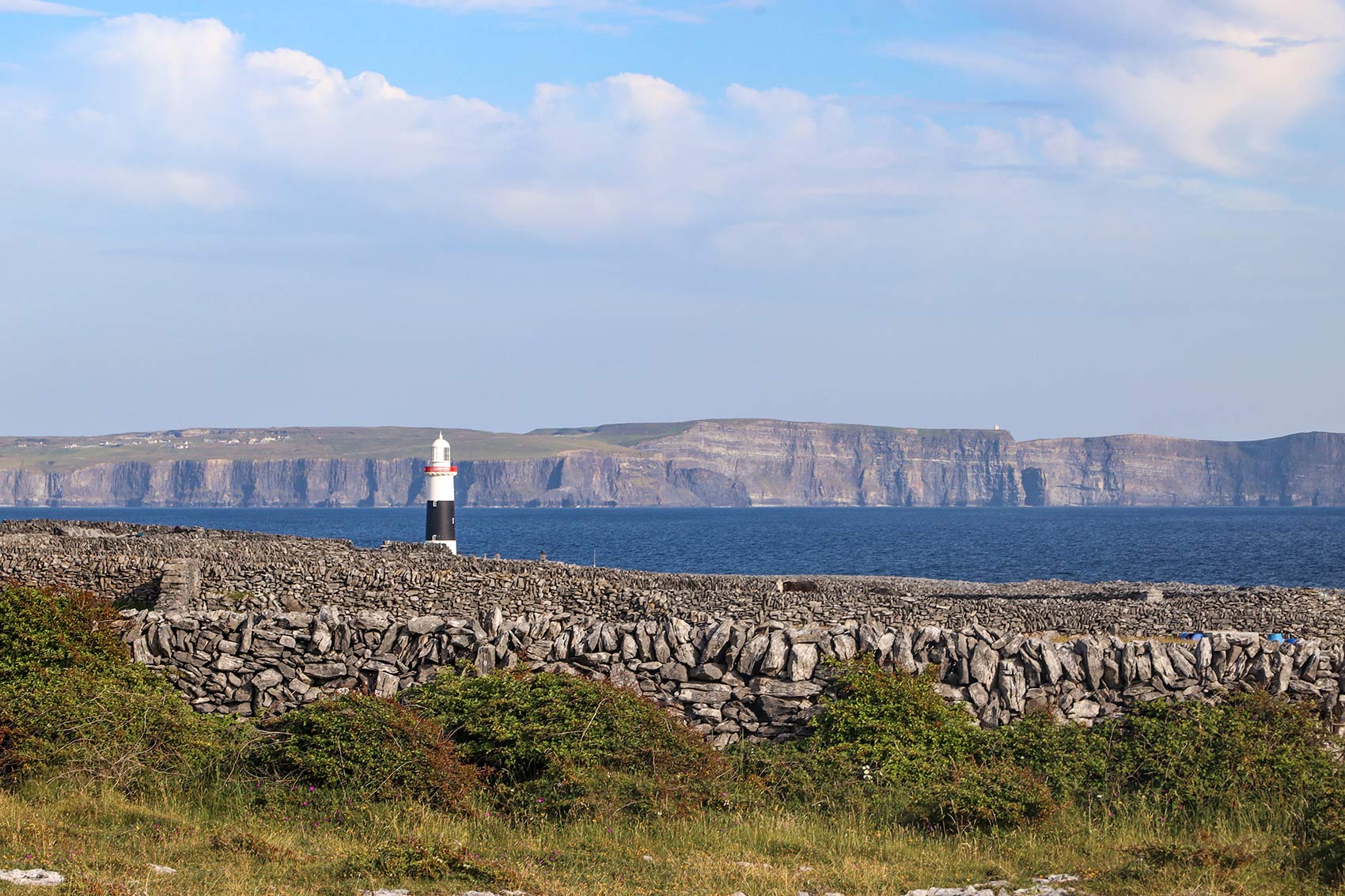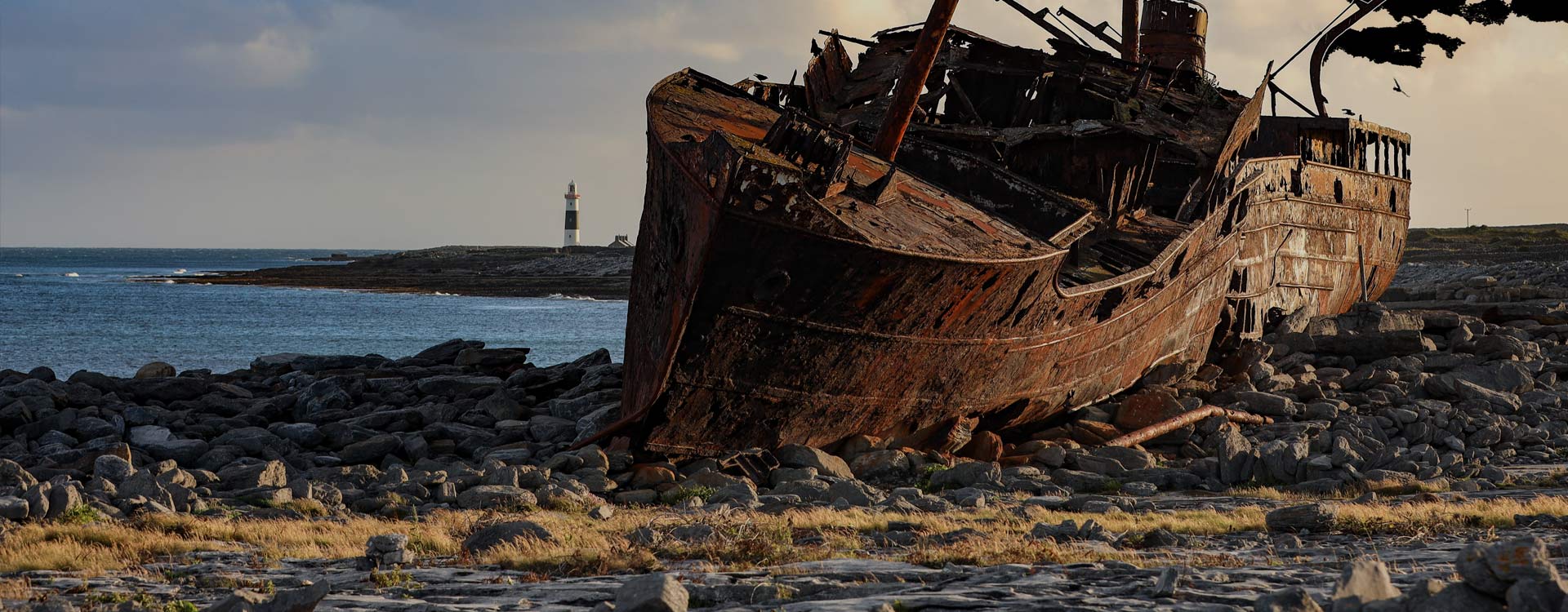
Location
Inis Oírr island is situated off the west coast of Ireland in Galway Bay. It is one of the group of islands known as The Aran Islands. It has an ancient history, a vibrant Irish speaking population, beautiful scenery and a tranquil pace of life. The island can be accessed, all year-round, by plane from Inverin, Connemara, by ferry from Rossaveal, Connemara or seasonly from Doolin, Co. Clare.
This beautiful and picturesque limestone island is partly clothed in a thin layer of soil, with unique flora and fauna in some sections, while in others its bare limestone klint and grikes are visible. Inis Oírr has a year-round population of 250 people and is a Gaeltacht island. Evidence of the island’s rich history, stretching right back to the stone age, adds to the attraction of the island. There is a church, post office, shop, bars, restaurants & cafés, hotel, hostel, B&B’s, campsite, sports facilities & playground, safe beach, community bus, craft outlets, Arts Centre and a community service Co-Operative. The island is accessible all year round by ferry or by aer.


Places to see on Inis Oírr


Cnoc Raithní (Beside an Pháirc)
This monument is a bronze age (c.1500 BC) burial mound rediscovered in 1885 when revealed by a sandstorm.
Caisleán Uí Bhriain & Dún Formna Fort
Caisleán Uí Bhriain & Dún Formna Fort (on the hill overlooking the beach) The castle is a three storey tower house built by the O’ Brien’s who controlled the island from approximately 1190 to 1585. Caisleán Uí Bhriain is built within the walls of Dún Formna Fort which dates back to the Stone Age.
The Watch Tower
The Watch Tower (in the general area of Dún Formna) Erected during the reign of Napoleon this was one of a series of watch towers built around the Irish coast to warn the English of an impending sea attack by the French.
Old National School
Old National School (adjacent to the watch tower) built in 1885, it was in use until 1940.
Teampall Chaomháin
Teampall Chaomháin (The island’s present day graveyard) Caomhán the patron saint of the island is buried in Leaba Chaomháin in this graveyard. His feast day is celebrated on Inis Oírr on the 14th June. The church ruins date back to the 10-14th century.
Loch Mór
Loch Mór (Eastern side of the island) This lagoon type lake has an area of 6.6 ha. and at approximately 23m deep is considered one of the deepest in Ireland. Pollinator samples were analyzed from the lake which indicate that the island was populated by trees thousands of years ago.
The Plassy Wreck
The Plassy Wreck (eastern seashore) On the 8 March, 1960 the Plassy cargo ship hit the Finnish Rock in South Sound (the sound between Inis Oírr and Clare) on its journey from Foynes to Galway. No lives were lost as the islanders, without any outside help saved all on board, but were not however allowed to save the cargo!


The Lighthouse
The Lighthouse (on the southeast tip of the island) The lighthouse is in operation since 1857. It is 37m in height. The light at night has a distance of 20 nautical miles.


Cill na Seacht nIníon
Cill na Seacht nIníon (halfway between the watch tower and the lake) This is known locally as AN CHILL. While it is recorded as the oldest monastic site on the island and is associated with Naomh Moninne, the first saint to inhabit the island, it is not generally visited by locals as a place of pilgrimage at present. The “sleeping quarters” in the perimeter wall are reminiscent of the catacombs in Rome. While ‘Cill na Seacht nIníon’ is translated as ‘Church of the Seven Daughters’ Seacht in Irish also means several or many.
Tobar Éanna
Tobar Éanna (close to the Southwestern seashore) This spring well, probably in use since prehistoric times, has been dedicated to Éanna a saint who came to inhabit these islands around 485AD. It remains a place of pilgrimage to this day and the special blessing associated with a sighting of the elusive resident eel makes it extra special.
Cill Ghobnait
Cill Ghobnait (on the western side) A piece of sculpture, of Inis Oírr limestone, by the sculptor Eileen Mac Donagh stands outside the site. The site itself contains the small church ‘Teampall Ghobnait’ two raised gravestones, a beehive hut and a large elder tree of sacred importance. This is a place of pilgrimage as it is where Saint Gobnait resided when she came to Inis Oírr from the Burren. The small church – Teampall Ghobnait, was built in the 8th or 9th century. It is said that St Gobnait, the pattern of Baile Bhuirne fled to Inis Oírr, to escape from their enemies on the mainland.
An Cloch Cuimhniúcháin
An Cloch Cuimhniúcháin (on the western side) This monument was erected in memory of all the islanders who lost their lives at sea.


